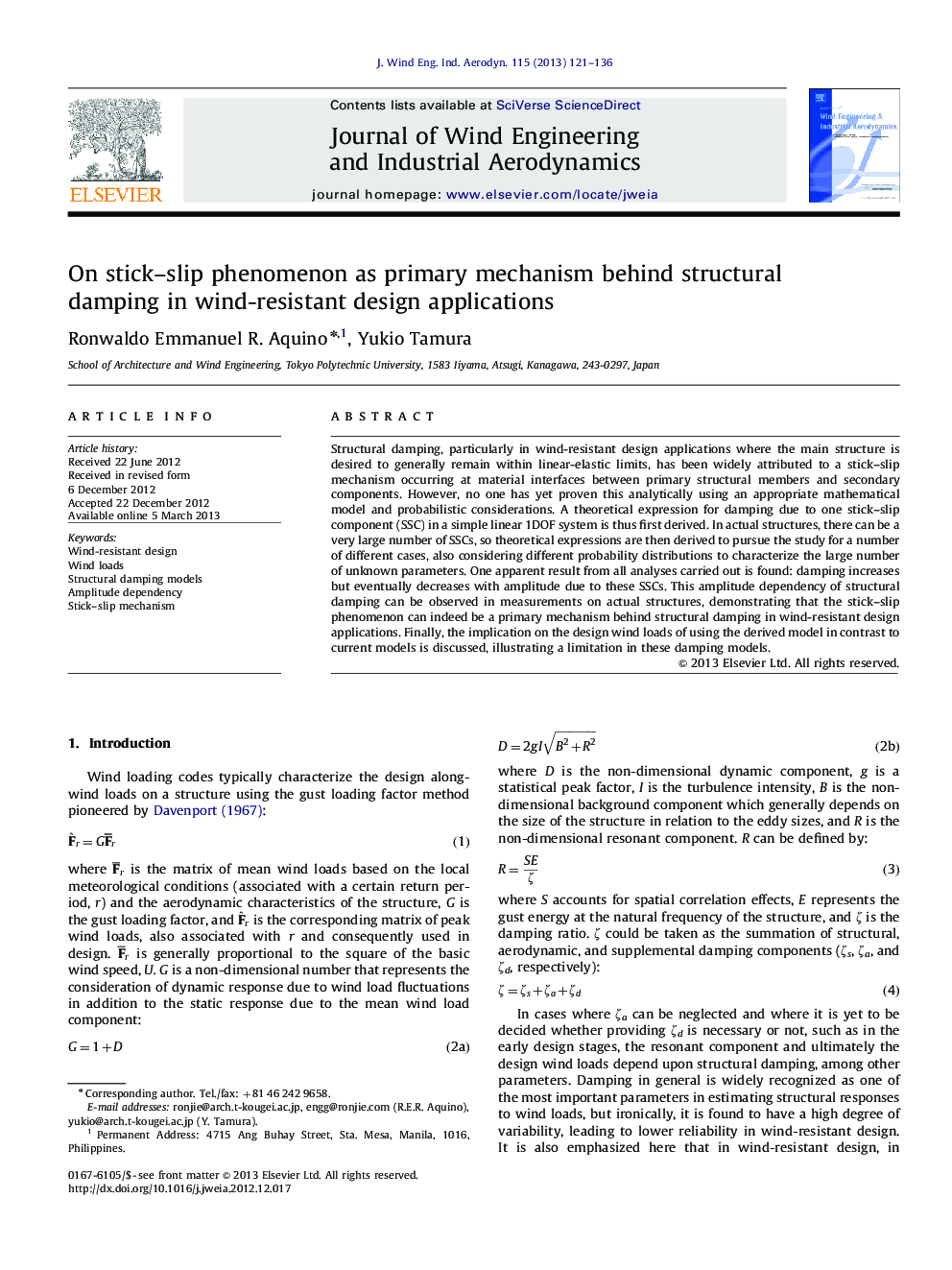| کد مقاله | کد نشریه | سال انتشار | مقاله انگلیسی | نسخه تمام متن |
|---|---|---|---|---|
| 292527 | 510913 | 2013 | 16 صفحه PDF | دانلود رایگان |

Structural damping, particularly in wind-resistant design applications where the main structure is desired to generally remain within linear-elastic limits, has been widely attributed to a stick–slip mechanism occurring at material interfaces between primary structural members and secondary components. However, no one has yet proven this analytically using an appropriate mathematical model and probabilistic considerations. A theoretical expression for damping due to one stick–slip component (SSC) in a simple linear 1DOF system is thus first derived. In actual structures, there can be a very large number of SSCs, so theoretical expressions are then derived to pursue the study for a number of different cases, also considering different probability distributions to characterize the large number of unknown parameters. One apparent result from all analyses carried out is found: damping increases but eventually decreases with amplitude due to these SSCs. This amplitude dependency of structural damping can be observed in measurements on actual structures, demonstrating that the stick–slip phenomenon can indeed be a primary mechanism behind structural damping in wind-resistant design applications. Finally, the implication on the design wind loads of using the derived model in contrast to current models is discussed, illustrating a limitation in these damping models.
► A theoretical expression for damping based on stick–slip mechanism was derived.
► The expression was updated for multiple stick–slip systems with unknown parameters.
► All cases analysed show damping increases but eventually decreases with amplitude.
► The stick–slip damping model can reflect results from full-scale measurements.
► The implication of using the derived model in wind-resistant design is discussed.
Journal: Journal of Wind Engineering and Industrial Aerodynamics - Volume 115, April 2013, Pages 121–136